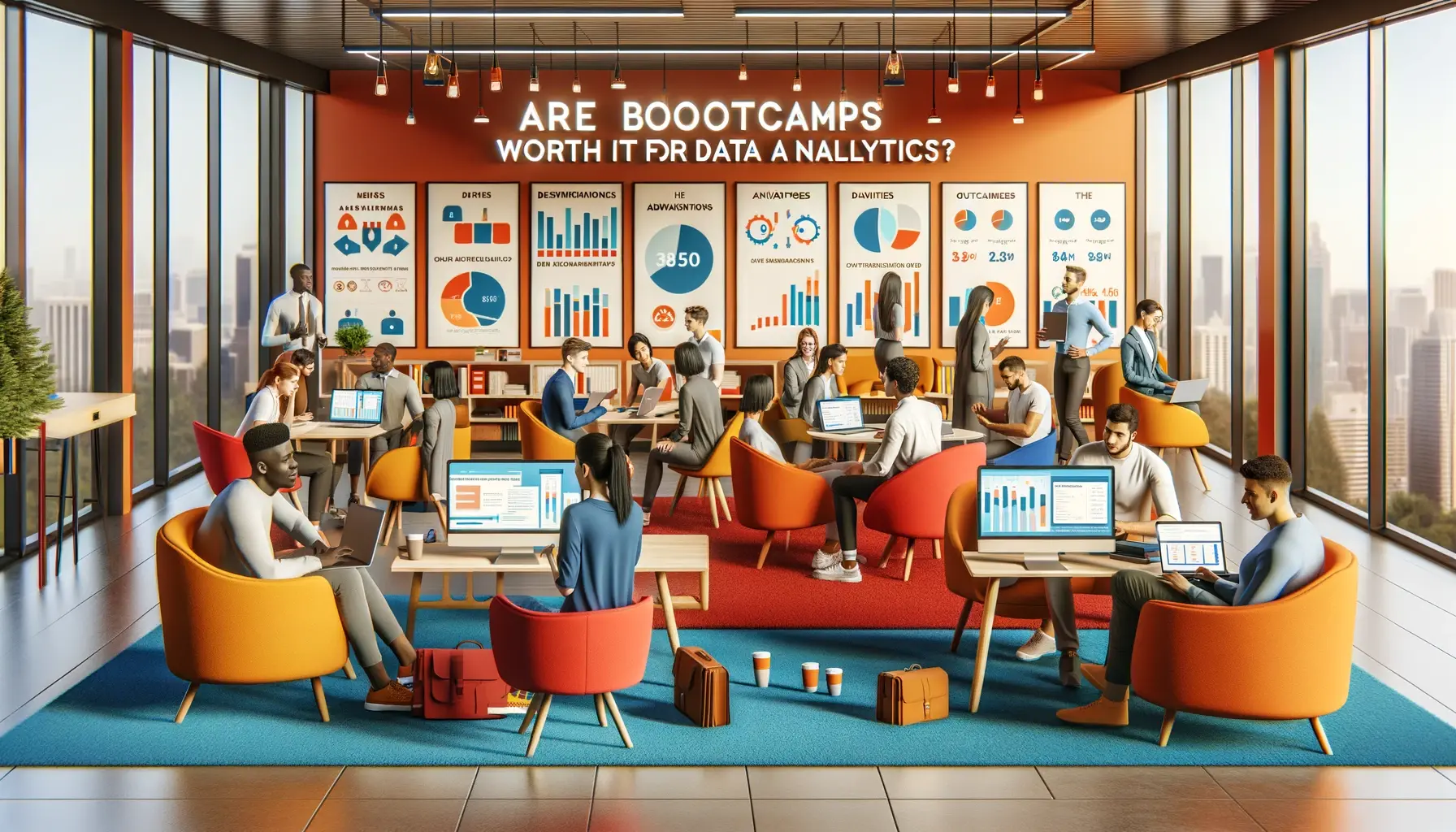6 min read
Are Bootcamps Worth It for Data Analytics?
Introduction
5 min read
![]() The Amazing Team at Skills Data Analytics
:
Jun 17, 2024 9:30:00 AM
The Amazing Team at Skills Data Analytics
:
Jun 17, 2024 9:30:00 AM
Data Analytics Freelance: A Comprehensive Guide
In today's data-driven world, organizations are relying heavily on data analytics to make informed decisions and gain a competitive edge. As a result, the demand for data analytics freelancers has skyrocketed, offering professionals the opportunity to provide their expertise on a project-by-project basis. This article aims to provide a comprehensive and detailed guide on data analytics freelance, covering its definition, key components, implementation steps, benefits, challenges, analytics reports, case studies, and future trends.
Definition:
Data analytics freelance involves providing data-driven insights and solutions to organizations on a freelance basis. Freelancers use their expertise in statistical analysis, machine learning algorithms, and programming languages to collect, organize, process, and analyze vast amounts of data. The goal is to extract valuable insights that help businesses make data-driven decisions and improve their overall performance.
Key Components:
To be successful in data analytics freelance, professionals should possess a diverse skill set, including:
1. Data Collection and Cleaning: This involves identifying and extracting relevant data from various sources, ensuring its quality, and removing any inconsistencies or duplicates.
2. Data Analysis: Freelancers should have expertise in statistical and analytical techniques to uncover patterns, trends, and correlations within the data.
3. Data Visualization: Presenting data in a visually appealing manner helps stakeholders understand and interpret insights easily. Proficiency in data visualization tools such as Tableau or Power BI is crucial.
4. Machine Learning: Knowledge of machine learning algorithms enables freelancers to build predictive models and deploy intelligent solutions.
Implementation Steps:
Implementing data analytics freelance projects typically involves the following steps:
1. Define Project Requirements: Understand the client's needs, goals, and desired outcomes. Identify the data sources and the specific questions the analysis should answer.
2. Data Collection and Preparation: Gather relevant data from various sources and clean it to ensure accuracy and consistency.
3. Data Analysis: Apply appropriate statistical and analytical techniques to extract insights and patterns.
4. Data Visualization: Present analysis results through visually appealing charts, graphs, or interactive dashboards.
5. Insights and Recommendations: Communicate the findings to stakeholders with actionable recommendations for improved decision-making.
Benefits:
Data analytics freelance offers several benefits to both freelancers and organizations:
1. Flexibility: Freelancers have the freedom to choose their projects and work schedules, providing a better work-life balance.
2. Skill Enhancement: Working on diverse projects allows freelancers to continually enhance their skills and expertise.
3. Collaboration Opportunities: Engaging with multiple organizations exposes freelancers to different industries and fosters collaboration opportunities.
Challenges:
While data analytics freelance presents exciting opportunities, it also comes with challenges:
1. Finding Clients: Building a client base and establishing trust can be challenging in a competitive freelancing market.
2. Data Security: Freelancers must ensure the confidentiality and security of client data, adhering to relevant data protection regulations.
Analytics Reports:
Analytics reports are the culmination of data analysis and provide a comprehensive summary of insights derived from the data. These reports typically include:
1. Executive Summary: An overview of key findings and recommendations.
2. Methodology: A description of the data sources, analytical techniques, and tools used.
3. Data Summary: Statistics and visualizations that provide a snapshot of the data analyzed.
4. Insights: Detailed analysis and interpretation of patterns, trends, and correlations.
Case Studies:
Case studies in data analytics freelance demonstrate real-world applications and showcase the impact of analytics projects. For example, a freelancer may have helped a retail company optimize pricing strategies by analyzing customer purchasing patterns and market trends. Another case study might involve a freelancer using machine learning algorithms to predict customer churn for a telecommunications company, leading to targeted retention efforts and increased customer loyalty.
Future Trends:
The field of data analytics freelance is constantly evolving. Some of the future trends to watch out for include:
1. Big Data Analytics: With the exponential growth of data, freelancers will need to specialize in handling large and complex datasets.
2. Artificial Intelligence Integration: The integration of AI technologies with data analytics will enable deeper analysis and more accurate predictions.
3. Ethical and Responsible Data Analytics: Freelancers will be expected to uphold ethical standards and prioritize responsible data handling practices.
At the end of this article, readers are encouraged to visit Skills Data Analytics website. This platform offers a variety of courses, certifications, and resources to enhance skills in data analytics freelance. It provides comprehensive training in crucial tools, techniques, and methodologies required to excel in the field.
Relevant FAQs:
To find data analytics freelance projects, you can use several strategies:
The essential programming languages for data analytics include:
To ensure data security while working on freelance projects, follow these best practices:
Typical rates for data analytics freelancers can vary based on experience, expertise, location, and the complexity of the project. However, general guidelines are:
Rates can also vary based on the project type (e.g., data visualization, machine learning, data engineering) and industry demand. Fixed-price projects might range from a few hundred to several thousand dollars, depending on scope and deliverables.
To showcase your skills and experience effectively:
In conclusion, data analytics freelance offers professionals the opportunity to utilize their expertise in statistical analysis, programming, and data visualization to provide organizations with valuable insights. This comprehensive guide has covered various aspects, including its definition, key components, implementation steps, benefits, challenges, analytics reports, case studies, and future trends. By staying informed and acquiring the necessary skills, individuals can thrive in the dynamic and rewarding field of data analytics freelance.

6 min read
Introduction

4 min read
Data Analytics Courses: A Deep Dive into the World of Data ScienceIn the digital age, data has become a valuable asset for businesses across...

5 min read
Best Data Analytics Bootcamp in the USAIn today's data-driven world, data analytics has become an integral part of many industries, helping...